Miller took the responsibility of translating Will Eisner's Central City and its denizens quite seriously and was not content to give us a period-piece homage. In Miller's discussions with Eisner, one thing became clear--the film adaptation was to be a modern, vital take on The Spirit.
When Dark Horse took on the assignment of making sculptural versions of the characters from Frank's cutting-edge treatment, we turned to an area that was new for us: digital sculpting. We engaged two of this new medium's leading artists, Canadian sculptor/interactive-game designer Kolby Jukes and the Alaskan tundra's wild, woolly, and creative Oluf Hartvigson.
Watching the pieces take shape was an interesting and educational experience, especially since they technically never existed as physical objects during the sculpting phase. The entire piece was essentially finished before it actually existed!
Upon completion of this phase, the 3-D digital files were output as a physical object. Objects, actually, as each piece was created in a number of components. This technology is so high tech and daunting that I am unable to accurately explain it. In fact, the technicians were unable to explain it to me, since I do not enjoy their level of security clearance, and if they revealed the process, then their employment covenants would have obligated them to terminate me with extreme prejudice. So we said, "Thank you," and paid the bill.
The The Spirit Snow Globe was particularly challenging due to its size. We don't think about it, but a water-filled globe has a magnifying effect on the object inside. It creates an optical illusion, increasing the apparent scale of whatever is inside by about 20%. That might not sound like very much, but when you are talking about a city building with small details like a fire escape, not to mention the very tiny lettering on the sign mounted on the building, it was akin to engraving the Lord's Prayer on the head of a pin.
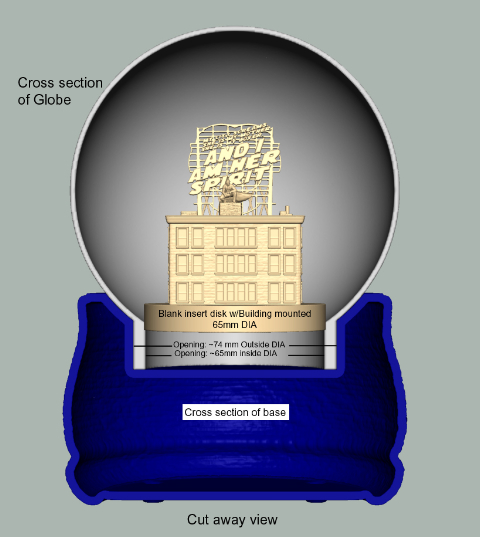

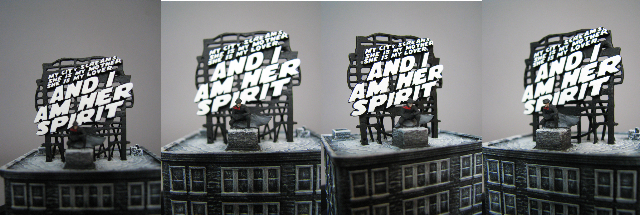

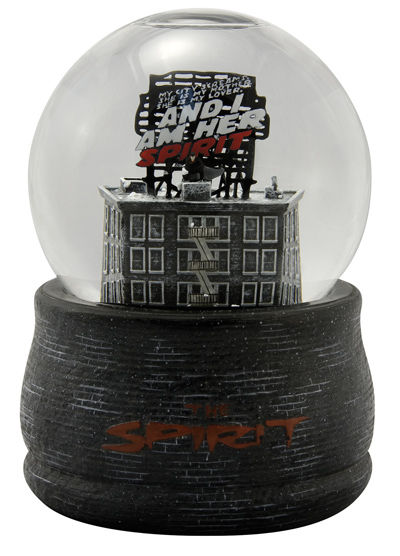
The output on the snow globe was handed to one of the toy industry's top mold makers for casting. Well known and respected in the trade for his excellent work for clients like DC Direct, Mezco, Toy Biz, and Diamond, "Irish Joe" Ferrell, based in Georgia, grabbed the work between his teeth and had at it with his usual vigor. He found himself creating special two-piece molds, rejecting the first version of the sign lettering, and essentially handcrafting the fire-escape details in a clear plastic. The project was now ambitious not only for what it was, but also for the geographic distance between the various participants.
Oluf Hartvigson handled all aspects of The Spirit Mini-Bust himself--sculpting, coordinating the output, and molding. He has generously shared some of the preliminary work in progress, available exclusively to Pony Express readers. This piece really grabbed the likeness of movie star Gabriel Macht, and stands as an excellent example of how digital-sculpting tools can be used by a skilled artisan to create not only an accurate likeness, but also a sense of drama and animation, without having to rely on digital scans of the subject. Oluf and Kolby each did their pieces using reference no different from the photography a traditional sculptor would use.

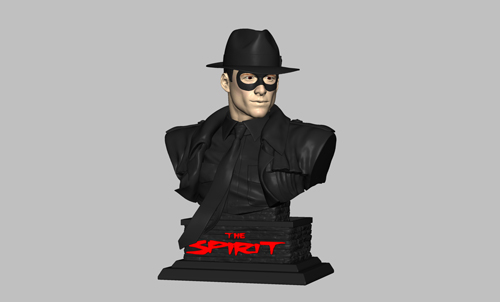
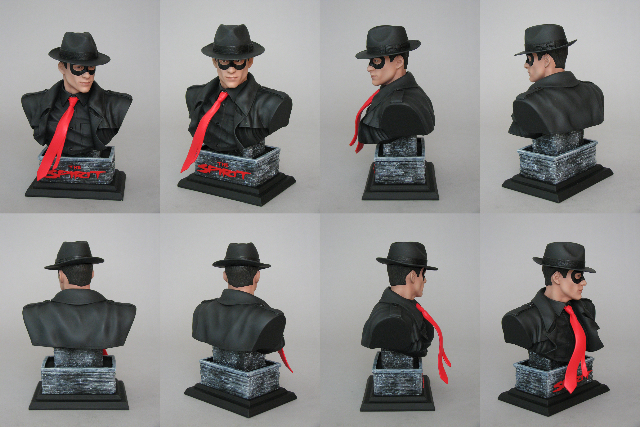
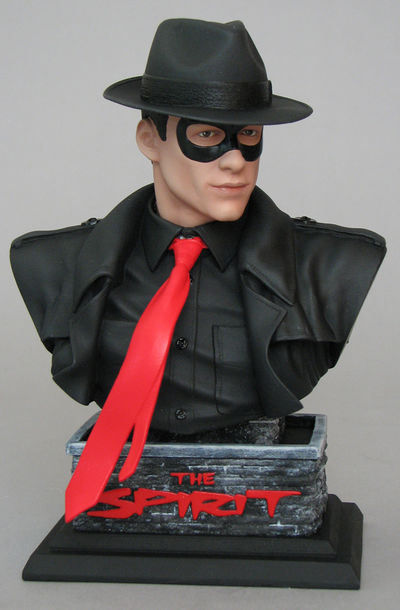
When the sculpting, output, and mold making were finished, having been studied and approved by Frank Miller and the licensing team at Lionsgate (Hi, Aubrey!) and Oddlot, we turned to top prototype painter Kat Sapene for the finishing touches.
She did her usual excellent job. The Dark Horse design team, coordinated by project manager Rebecca D'Madeiros, finished everything off with a superior Certificate of Authenticity and package design that are innovative and in keeping with the visual look of the film.
We are honored to have been a small part of The Spirit, and hope you enjoy the experience as much as we did.